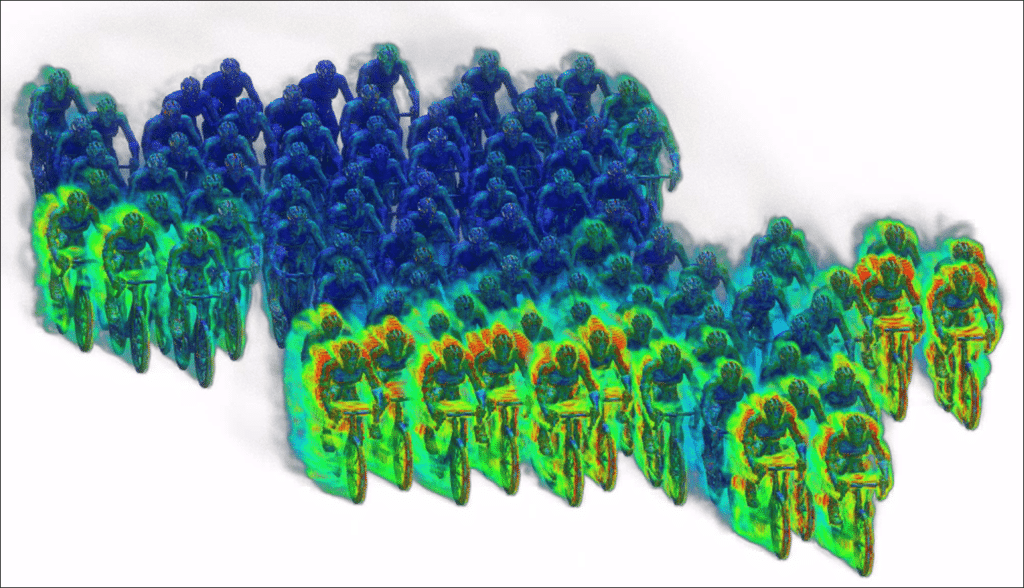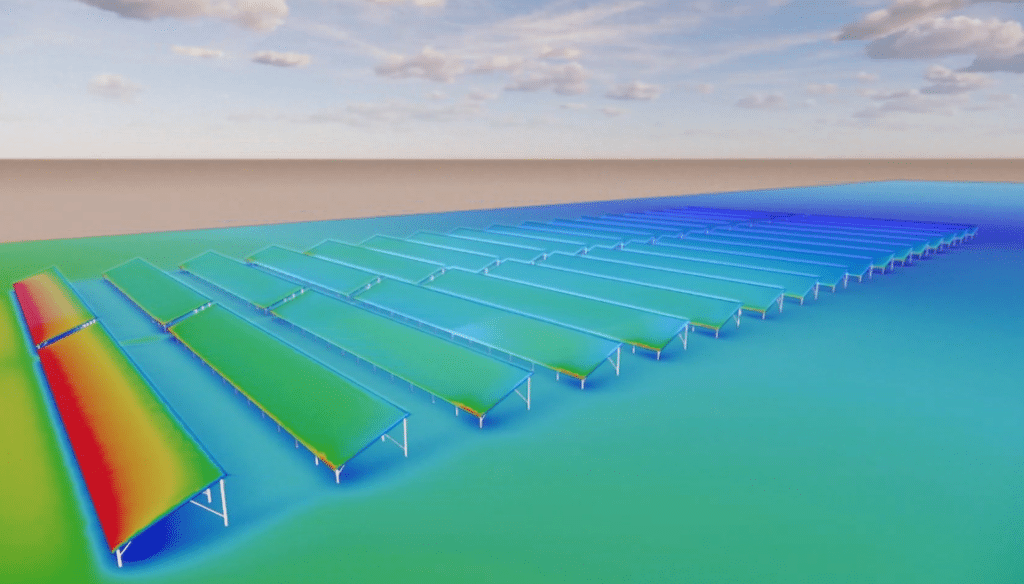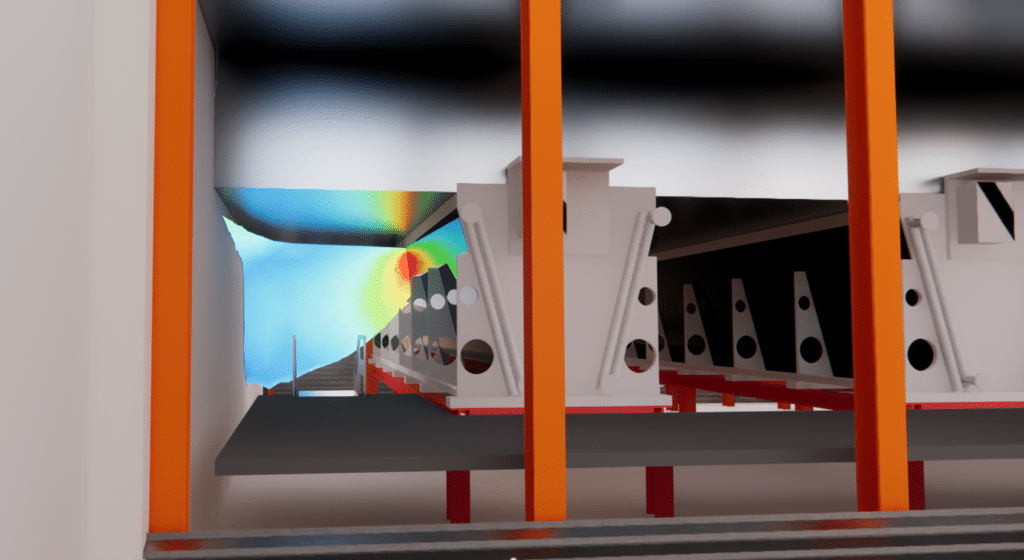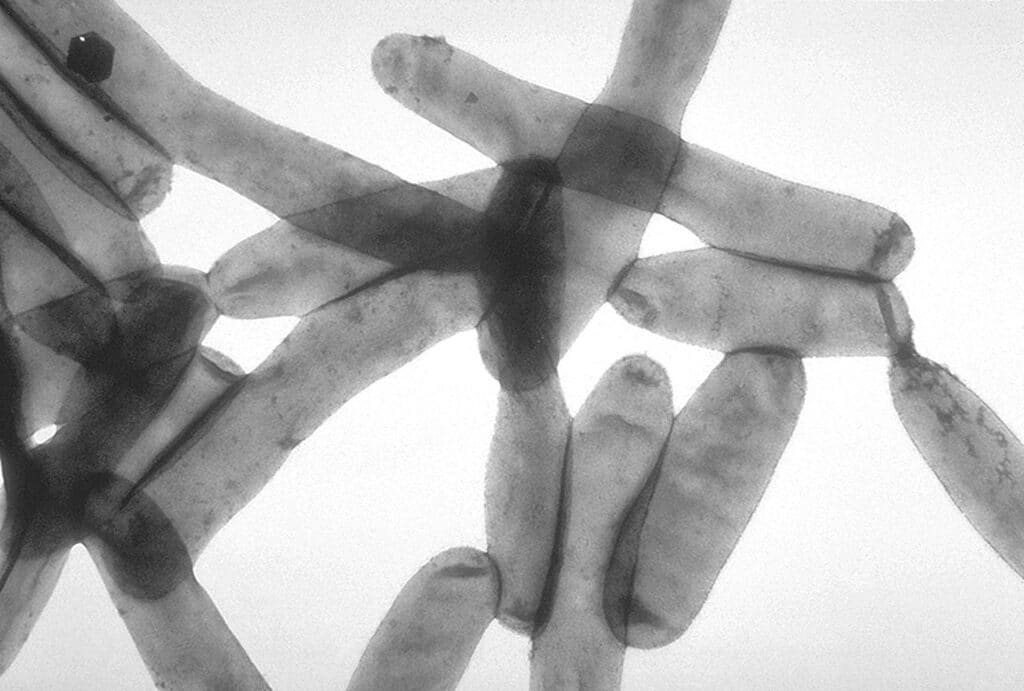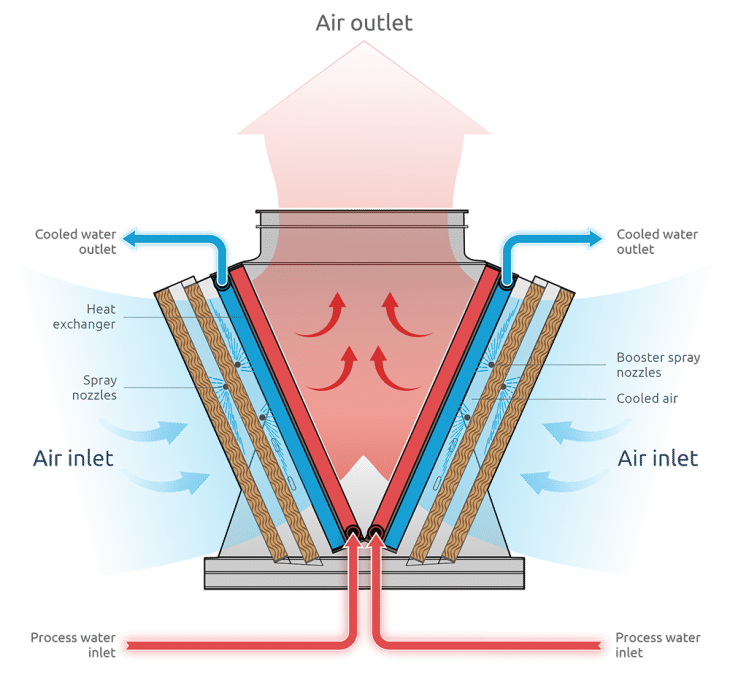Legionnaires’ disease and cooling towers
Accueil » Climatic engineering » Legionnaires’ disease and cooling towers
Legionnaire's disease: Understanding the risks associated with cooling towers
Air-cooled cooling towers, used to cool water by spraying it into the air, can promote the spread of Legionnaires’ disease. The bacteria thrive at temperatures between 20°C and 45°C, particularly in the hot water found in cooling towers. It is transmitted by inhalation of contaminated water droplets containing the bacteria. EOLIOS can help you manage this risk.
Our projects :
Legionella and cooling towers: Understanding the risks and precautions to take
Legionellosis: a respiratory disease
Legionellosis is a serious respiratory disease caused by the bacterium Legionella pneumophila. This bacterium occurs naturally in aquatic environments such as lakes, rivers and hot springs. It multiplies in water distribution systems such as cooling towers, air-conditioning systems, showers and spas.
Legionellosis is generally transmitted by inhalation of contaminated water droplets containing the bacteria. Those most at risk are people with weakened immune systems, the elderly, smokers and people with chronic respiratory diseases.
The dangers of cooling towers in the spread of legionellosis
Symptoms of legionellosis can include high fever, chills, headaches, muscle aches, coughing and breathing difficulties. In severe cases, legionellosis can lead to life-threatening pneumonia.
Air-cooled towers, also known as cooling towers, are equipment used to cool water by vaporizing it in the air. They are often used in industrial air-conditioning systems, power plants and other installations where water cooling is required.
The development and transmission of legionellosis by TARs
Facilities conducive to the proliferation of Legionella bacteria
Legionella pneumophila bacteria thrive mainly in warm, stagnant aquatic environments.
It thrives particularly well in temperatures between 20°C and 45°C, with an optimum temperature of around 35°C to 40°C. Warm water, such as that found in cooling towers or domestic hot water distribution systems, provides ideal conditions for its growth.
What’s more, Legionella is capable of colonizing surfaces and forming biofilms, which are layers of bacteria and other micro-organisms attached to submerged surfaces. These biofilms provide a protective environment for the bacteria, promoting their proliferation.
Bacteria need nutrients to grow, particularly organic matter in the water. Thus, the presence of deposits of organic sediment or dissolved organic matter can contribute to bacterial growth.
In addition, it’s important to note that Legionella can grow in various installations where water is heated and circulated, such as cooling towers, air-conditioning systems, communal showers, fountains and sprinkler systems. It is relatively resistant to the usual concentrations of chlorine used in water treatment, requiring adequate levels of disinfection to control its growth.
Legionella inhalation: How contamination occurs and the health consequences
Legionella pneumophila bacteria are spread to humans mainly by inhalation of contaminated water droplets. When water containing the bacteria is dispersed as aerosols or small droplets in the air, for example by equipment such as cooling towers, hot water systems, communal showers or whirlpool baths, people in the vicinity can inhale these contaminated droplets and become infected.
Once inhaled, Legionella bacteria can enter the lungs, where they can cause respiratory infections such as Legionnaires’ pneumonia. It should be emphasized that Legionella is spread solely by inhalation of airborne droplets, and not by direct person-to-person transmission. The bacterium is not spread by skin contact or ingestion of contaminated water.
To prevent Legionella proliferation, it is essential to implement appropriate preventive measures, including regular cleaning, disinfection and maintenance of installations, the use of antimicrobial chemicals to treat water, the maintenance of good hygiene and ventilation practices, and regular monitoring of water quality. Understanding the factors that favor the development of Legionella bacteria is crucial to implementing effective preventive measures and reducing public health risks.
Example of an impact study for a TAR - ICPE
Legionella risks: Controlling emissions from cooling towers
The operation of cooling towers encourages the development of Legionella pneumophila bacteria and their spread to humans. Water vapour emissions from rooftop installations may contain this bacterium. It is therefore crucial to take into account the surrounding environment and control water vapor emissions to reduce the risk of Legionnaires’ disease when installing these systems.
CFD simulation of moist thermal plumes in several data center buildings
To prevent the transmission of Legionella from cooling towers, it is essential to implement appropriate water management measures, such as maintaining water temperatures and treatment conditions that inhibit Legionella growth. Regular inspections, cleaning and disinfection of cooling towers are also important to control the spread of the bacteria.
What do French and international regulations say?
Regulations and guidelines are often in place to guide owners and operators of facilities using cooling towers in the prevention of legionellosis. These measures are designed to reduce the risk of exposure of workers and the public to Legionella pneumophila bacteria. They are mainly defined by the French Public Health Code. Here are the main regulatory provisions:
-
Declaration and registration of TARs: TAR owners or operators must declare them to the relevant authorities. This declaration makes it possible to identify facilities and monitor their compliance with health regulations.
-
Risk assessment and preventive measures: Owners or operators of water treatment plants are required to carry out a risk assessment of Legionella proliferation in their facilities. This assessment should lead to the implementation of appropriate preventive measures, such as regular monitoring of water quality, cleaning and disinfection of installations, and maintenance of adequate water temperatures to inhibit bacterial growth.
-
Water quality monitoring and control: ART owners and operators must implement water quality monitoring programs to detect any Legionella contamination. These programs generally include periodic microbiological analyses of the water drawn from TARs.
-
Staff training: It’s also important that staff responsible for operating and maintaining ARTs are trained in good legionella prevention practices and the safe handling of chemicals used to clean and disinfect the facilities.
These regulations aim to reduce the risk of exposure of workers and the public to legionellosis associated with TARs. Local health authorities are responsible for enforcing these regulations, and may carry out regular inspections to ensure compliance.
Regulatory references: ICPE
In 2004, following a number of cases of Legionnaires’ disease linked to the proliferation and dispersal of Legionella by cooling towers, ICPE nomenclature heading 2921 was created. The regulations were revised in 2013 and came into force during 2014.
Under this heading are subject to :
- Registration (threshold E): evaporative cooling systems using the dispersion of water in an air stream with a power rating equal to or greater than 3000 kW.
- Declaration with control (DC threshold): evaporative cooling systems using water dispersed in an air stream with a capacity of less than 3000 kW.
Optimizing cooling towers to reduce the risk of Legionella proliferation
Risk analysis and impact assessment using CFD simulation
CFD is a numerical simulation method used to study the behavior of moving fluids in complex systems. In the context of Legionnaires’ disease and cooling towers, CFD can play a role in reducing the risk of Legionella spreading.
It models the dispersion of contaminated water droplets in the air. By understanding how aerosols disperse in the environment around cooling towers, it is possible toidentify risk areas where Legionella concentrations may be high. This information is invaluable for implementing targeted preventive measures, such asadjusting ventilation or setting up physical barriers.
CFD simulation of moist thermal plumes in several data center buildings
It is also possible to simulate the operation of cooling towers andoptimize their design to minimize the risk of Legionella proliferation. By analyzing parameters such as air velocity, water temperature or equipment geometry, it is possible tomake modifications to create conditions unfavorable to bacterial growth.
CFD can also be used to assess the effectiveness of preventive measures put in place. For example, it is possible to simulate the impact of water treatment or the installation of a filtration system on Legionella dispersion. This makes it possible tooptimize prevention measures according to the specific characteristics of each installation.
EOLIOS engineering services
EOLIOS is a specialist fluid mechanics company offering CFD (Computational Fluid Dynamics) modeling services specifically designed for cooling tower installations. Our expertise focuses on optimizing the design and performance of cooling towers, as well as managing and reducing the risks of legionella propagation.
Here are just some of the services we offer:
-
CFD modeling: EOLIOS uses advanced CFD modeling tools to simulate the behavior of fluids and particles in cooling towers. These simulations enable us to accurately visualize the various fluid flows, understand the interactions between air and water, andassess the effects of dispersing contaminated water droplets.
-
Optimizing the design of cooling towers: EOLIOS can help companies optimize the design of their cooling towers toimprove efficiency and reduce the risk of spreading Legionnaires’ disease. They can provide recommendations on spray nozzle configuration, heat exchange panel layout and other design parameters.
-
Risk assessment: EOLIOS can carry out risk assessments for existing installations toidentify areas at high risk of legionella proliferation. These assessments include analyses of the dispersion of contaminated water droplets, water quality studies and recommendations for minimizing risks.


